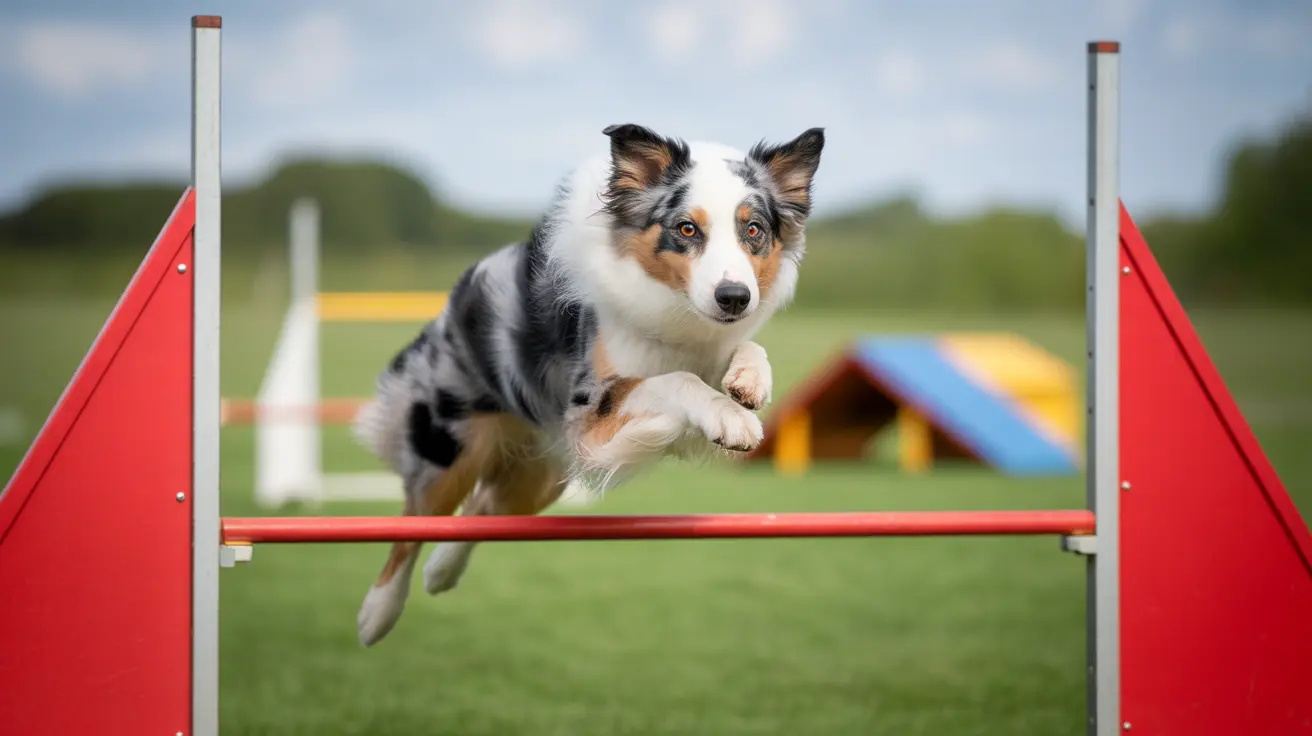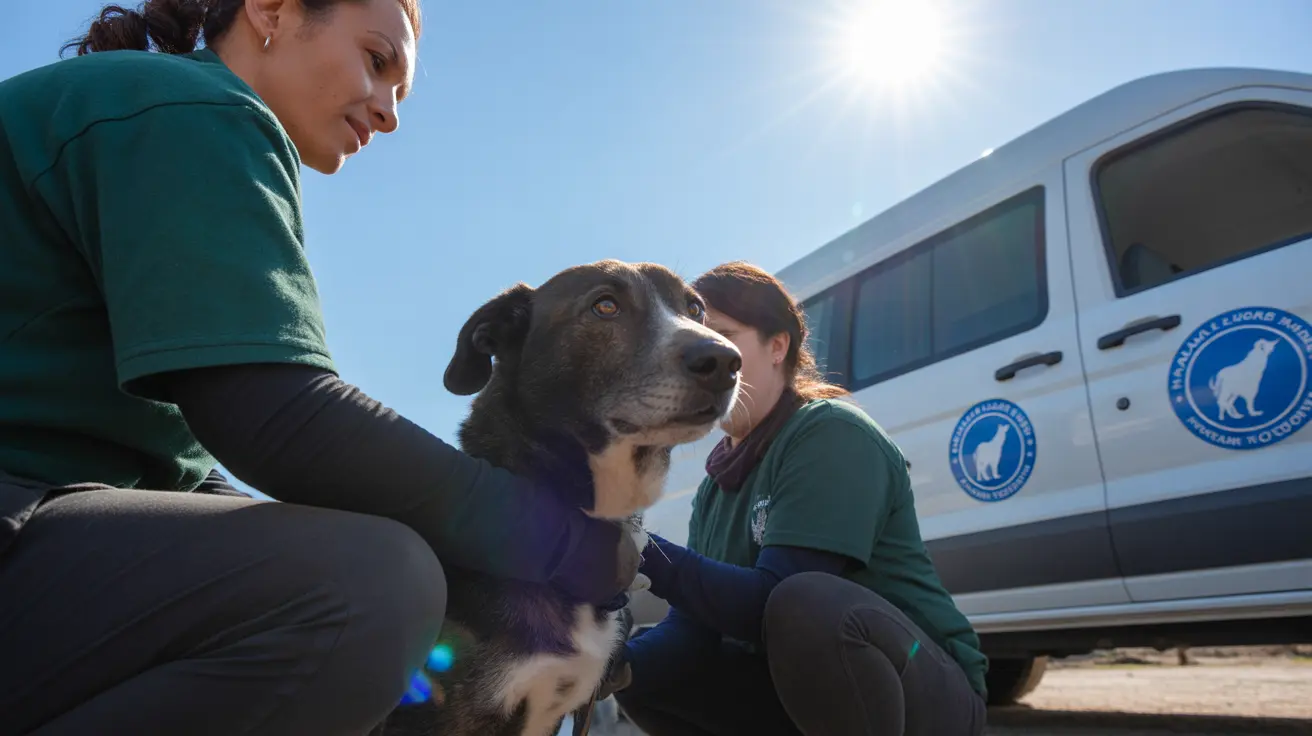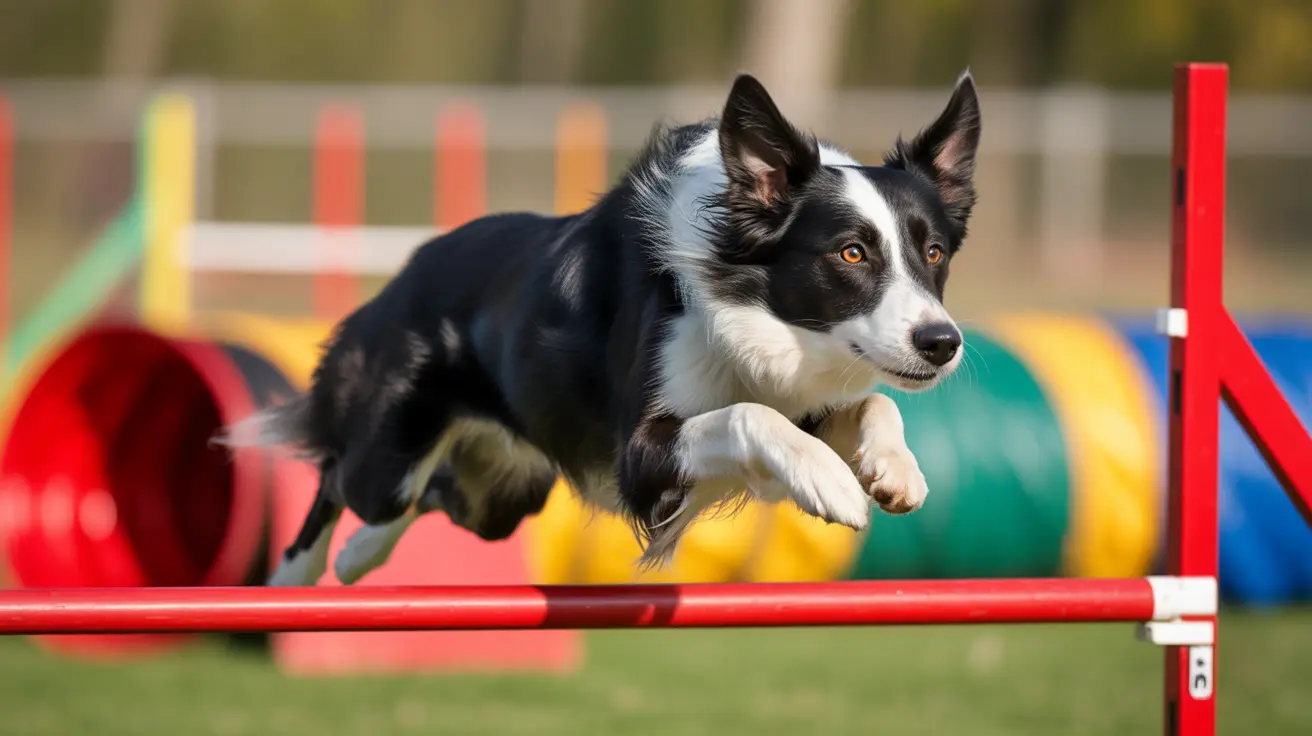Popular Dog Sports for Dogs and Owners: A Complete Guide to Canine Activities
Dog sports offer an incredible opportunity for canines and their human companions to bond while staying physically and mentally active. These diverse activities cater to dogs of all breeds, ages, and energy levels, providing structured ways to channel natural instincts and abilities. Whether you're looking to compete professionally or simply enjoy recreational activities with your furry friend, understanding the landscape of popular dog sports for dogs and owners can help you find the perfect match for your lifestyle and your dog's personality.
From high-energy agility courses to precision-based scent work, dog sports have evolved to accommodate various interests and physical capabilities. These activities not only provide essential exercise and mental stimulation but also strengthen the communication and trust between dogs and their handlers. As more pet owners recognize the benefits of structured canine activities, dog sports have gained tremendous popularity as both competitive pursuits and enjoyable pastimes.
High-Energy Dog Sports for Active Companions
Agility Training and Competition
Agility stands as one of the most popular dog sports for dogs and owners worldwide, involving dogs navigating obstacle courses with jumps, tunnels, and weave poles in a specific order. This sport requires exceptional teamwork and communication between the dog and handler, as dogs must follow their owner's gestures and voice commands to successfully complete the course. The beauty of agility lies in its adaptability to different skill levels and physical abilities, making it accessible to dogs of various breeds and ages.
The sport improves coordination and fitness for both participants while building confidence and trust. Dogs learn to respond quickly to directional cues, developing enhanced focus and problem-solving skills. For handlers, agility provides an excellent cardiovascular workout and teaches precise timing and clear communication techniques.
Flyball: The Ultimate Team Sport
Flyball represents the epitome of canine team sports, featuring relay races where dogs run over hurdles, trigger a box to release a tennis ball, catch it, and return to their handler. This high-speed activity builds remarkable speed, accuracy, and focus while developing essential social skills as dogs work alongside teammates. The sport's team-based nature creates a unique community atmosphere where both competitive and recreational participants can enjoy the excitement of relay racing.
The precision required in flyball helps dogs develop exceptional ball-handling skills and improves their ability to work under pressure. Teams typically consist of four dogs, with each member contributing to the overall performance, making it an excellent choice for owners who enjoy collaborative activities.
Precision and Skill-Based Sports
Scent Work and Nose Work Activities
Scent work harnesses dogs' natural olfactory abilities, requiring them to identify and locate specific scents in various environments. This mentally engaging sport enhances confidence and suits dogs of all ages, including shy or reactive dogs who might struggle with more physically demanding activities. The sport celebrates the incredible power of the canine nose while providing structured mental challenges that can be deeply satisfying for dogs.
Nose work activities can be adapted for indoor and outdoor settings, making them accessible year-round. Dogs learn to work independently while maintaining communication with their handlers, developing self-reliance and problem-solving abilities that transfer to other areas of training.
Tracking and Mantrailing
Tracking trials test dogs' scent-trailing abilities, similar to search and rescue work but in a controlled sporting environment. Mantrailing, a related discipline, features dogs using their noses to follow human scent trails in a dog-led, non-competitive format. These activities build trust and communication between dogs and handlers while providing intense mental stimulation that can be more tiring than physical exercise.
Both sports allow dogs to work at their own pace while following natural instincts, making them excellent choices for dogs who might not excel in speed-based activities but possess strong scenting abilities.
Creative and Artistic Dog Sports
Heelwork to Music and Canine Freestyle
Heelwork to Music, also known as Canine Freestyle, involves dogs performing choreographed routines set to music, displaying both obedience and creativity. This artistic sport fosters a deep connection between dogs and handlers while celebrating the graceful expression of movement. The choreographed nature allows for personalization based on the dog's natural movements and physical capabilities.
Canine Freestyle emphasizes fun and creativity over rigid competition standards, making it appealing to owners who prefer artistic expression to traditional competitive formats. The sport builds exceptional communication skills and allows dogs to showcase their unique personalities through movement.
Trick Training and Performance
Trick training provides mental stimulation and fun while encouraging patience and strengthening the dog-owner relationship regardless of the dog's age or size. This accessible sport allows for creativity and personalization, with tricks ranging from simple commands to complex sequences that can be performed anywhere.
The versatility of trick training makes it an excellent foundation for other dog sports while providing immediate satisfaction through quick learning opportunities and impressive demonstrations of the human-animal bond.
Water and Outdoor Adventure Sports
Dock Jumping and Water Sports
Dock jumping involves dogs leaping from a dock into water to compete for distance or height. This low-impact sport is excellent for water-loving breeds and promotes confidence in aquatic environments. The sport's accessibility and spectacular visual appeal have made it increasingly popular at dog shows and sporting events.
Water-based activities provide natural cooling and joint-friendly exercise, making them ideal for dogs with mobility concerns or those living in hot climates. The sport builds confidence while allowing dogs to engage their natural swimming abilities.
Bikejoring and Pulling Sports
Bikejoring is a pulling sport where a harnessed dog pulls a rider on a bicycle, requiring training for both obedience and endurance. This activity builds incredible physical fitness while providing an exciting way to explore trails and paths together. The sport demands excellent communication and trust, as dogs must respond to commands while maintaining pulling power.
Weight pulling, another strength-based sport, showcases dogs pulling heavy loads up to five times their body weight, focusing on strength, teamwork, and endurance. These sports celebrate the working heritage of many breeds while providing structured outlets for natural pulling instincts.
Beginner-Friendly and Accessible Sports
Rally Obedience and Basic Training Sports
Rally obedience involves navigating courses of obedience exercises marked with signs, increasing teamwork and communication between dogs and handlers. This sport provides structure while maintaining a more relaxed atmosphere than traditional obedience trials, making it ideal for beginners or dogs transitioning from basic training to competitive activities.
AKC Rally and similar programs offer clear progression paths from novice to advanced levels, allowing teams to build skills gradually while maintaining enjoyment and motivation.
Canine Hoopers and Low-Impact Activities
Canine Hoopers features courses with hoops, barrels, and tunnels designed for free-flowing movement. This sport is particularly suitable for all dogs, especially those needing low-impact exercise due to age or physical limitations. The emphasis on smooth, flowing movement rather than sharp turns and high jumps makes it accessible to a broader range of participants.
Dog Parkour, another low-impact activity, encourages dogs to move creatively using urban or natural obstacles, building confidence and physical fitness while exploring environments in new ways.
Choosing the Right Dog Sport for Your Team
Selecting appropriate activities requires careful consideration of your dog's breed, age, temperament, and health status. High-energy breeds often excel in agility and flyball, while scent-driven dogs may find fulfillment in nose work or tracking activities. Water-loving breeds naturally gravitate toward dock jumping and swimming-based sports.
Before beginning any dog sport, consultation with a veterinarian helps assess your dog's physical readiness and identify any limitations that might influence sport selection. Age considerations are crucial, with puppy-appropriate activities differing significantly from sports suitable for senior dogs.
Training Principles and Safety Considerations
Successful participation in dog sports relies on positive reinforcement, consistency, and gradual progression in training. Warm-up and cool-down routines prevent injuries while proper nutrition and joint care support long-term athletic performance. Some supplements, including undenatured type II collagen and omega-3 fatty acids, have shown benefits for joint health in active dogs.
Safety protocols vary by sport but generally include proper equipment fitting, environmental awareness, and recognition of fatigue or stress signals. Building fitness gradually and respecting individual limits ensures sustainable participation and prevents burnout or injury.
Getting Started in Dog Sports
Local clubs, training classes, and events provide entry points into dog sports communities. Organizations such as the American Kennel Club (AKC) offer resources, training materials, and event calendars to help newcomers find appropriate activities and venues. Equipment needs vary by sport but often include basic items like harnesses, leashes, treats, and sport-specific gear such as agility obstacles or flying discs.
Many sports offer introductory classes or workshops that allow dogs and handlers to try activities before committing to equipment purchases or extensive training programs. These opportunities provide valuable insights into sport requirements and compatibility.
Benefits Beyond Competition
Participation in dog sports enhances physical fitness, mental stimulation, obedience, socialization, and confidence for both dogs and handlers. These activities deepen the human-dog bond while improving communication skills that transfer to daily life situations. Many owners report reduced behavioral issues through structured exercise and mental engagement provided by regular sport participation.
The community aspect of dog sports creates lasting friendships and support networks among participants, extending benefits beyond the immediate dog-handler team to include social connections and shared learning experiences.
Frequently Asked Questions
- What is the best dog sport for beginners?
Rally obedience and basic trick training are excellent starting points for newcomers to dog sports. These activities build fundamental communication skills and obedience while maintaining a fun, low-pressure environment that helps both dogs and handlers gain confidence.
- Can older dogs participate in dog sports?
Yes, many dog sports accommodate senior dogs through modified activities and lower-impact options. Scent work, trick training, and Canine Hoopers are particularly suitable for older dogs, as they provide mental stimulation without excessive physical demands.
- How do I know which sport is right for my dog's breed?
Consider your dog's natural instincts and physical characteristics. Herding breeds often excel in agility and obedience sports, scent hounds thrive in tracking and nose work, while water breeds naturally gravitate toward dock jumping and swimming activities.
- Do I need special equipment to start dog sports?
Basic equipment requirements vary by sport, but most activities can begin with simple items like a properly fitted harness, leash, and high-value treats. More specialized equipment can be acquired as interest and skill levels develop.
- How often should dogs participate in sports activities?
Frequency depends on the sport's intensity and the dog's fitness level. Most dogs benefit from 2-3 training sessions per week, with rest days allowing for recovery and preventing overexertion or burnout.
- Can reactive or shy dogs participate in dog sports?
Many sports, particularly scent work and trick training, can help build confidence in shy or reactive dogs. These activities provide structured positive experiences while working within the dog's comfort zone and gradually expanding social confidence.
- What are the costs associated with dog sports participation?
Costs vary significantly depending on the sport and level of participation. Recreational activities may require minimal investment in basic equipment, while competitive participation involves training fees, entry fees, travel costs, and specialized equipment purchases.
Conclusion
Popular dog sports for dogs and owners offer diverse opportunities to strengthen bonds while promoting physical and mental well-being. From high-energy activities like agility and flyball to precision-based sports like scent work and tracking, there's a perfect match for every dog-handler team. The key lies in understanding your dog's individual characteristics, interests, and physical capabilities while remaining open to new experiences and learning opportunities.
Whether pursuing competitive excellence or recreational enjoyment, dog sports provide structured ways to celebrate the unique abilities and personalities of our canine companions. The journey of discovering and developing skills together creates lasting memories and deepens the remarkable connection between dogs and their human partners, making every training session and competition an investment in a lifelong bond.





